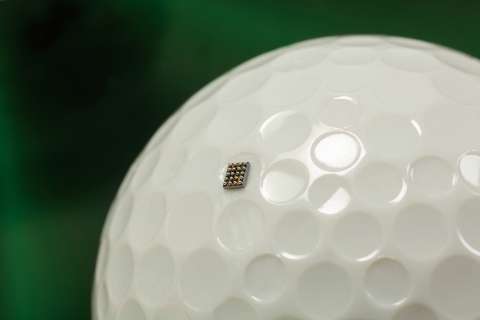Freescale Semiconductor is introducing one of the smallest ARM based Microcontroller Units (MCUs) ever, a chip that is roughly the size of a dimple on a golf ball—the Kinetis KL03. Because of its extremely small size, the company is positioning the MCU as an important step towards the development of the concept known as "The Internet of Things."
ARM processors are a group of reduced instruction set processors based on the RISC architecture. As they have evolved, they have come to be used primarily as processors for embedded applications—they do one kind of thing really well, rather than a lot of things reasonably well. One such sub-group of ARM processors are known as Microcontroller Units—very small processors that are intended for a single type of application, such as monitoring an electrical signal, blood pressure or the amount of light in a room. They advantage of having a group type is that it allows for compatibility between similar devices and peripherals, and portability of code. As MCUs have grown smaller, they have become an integral part of the The Internet of Things.
The Internet of Things, is an idea that doesn't yet have a formal designation—like the Internet, people define it differently depending on their own perspective. In general, it's a way of describing a world where everyday life is connected to the Internet—where physical objects are seamlessly connected to human activity and the information network. In such a world people and tiny devices will coexist to such an extent they become intertwined—everyone will be connected to everyone and everything else—all the time.
The new MCU developed by Freescale is 15 percent smaller than anything the company has made before, yet is just as powerful. Its 32 bit architecture chip measures a mere 1.6 x 2 millimeters—small enough to be embedded in wearable devices (or swallowed as part of a biometric sensor). Onboard it has 32KB flash memory, 8K ROM and 2K RAM. It also has a boot loader and analog comparator and power management software for reducing battery needs. In short, it has everything a device maker might need to create devices that are so small, in many cases, people won't be aware of their presence.
Whether such a processor proves to be a harbinger of The Internet of Things remains to be seen. What is likely certain, however, is that MCUs such as the KL03 will very soon be embedded in a whole new world of tiny devices, offering unprecedented capabilities.
© 2014 Phys.org



















